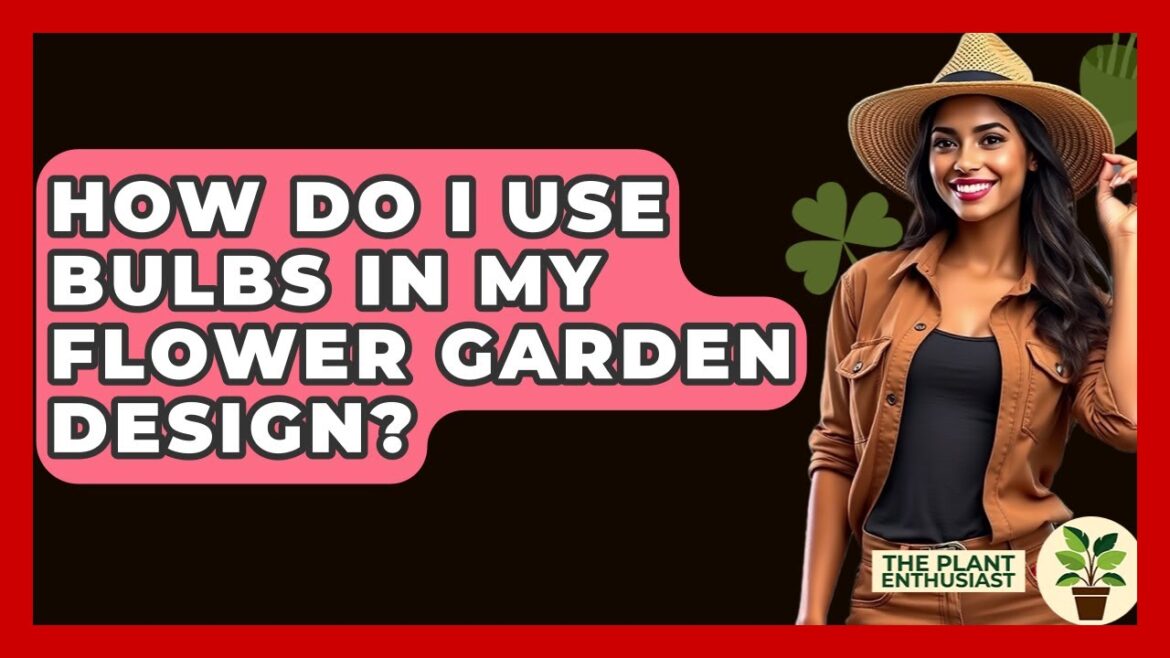How Do I Use Bulbs In My Flower Garden Design? In this video, we will guide you through the exciting world of using bulbs in your flower garden design. Bulbs are a fantastic way to add color and vibrancy to your outdoor space, and understanding how to incorporate them can transform your garden. We will cover essential tips on selecting the right bulbs for your climate, planting techniques, and design strategies that will help you create stunning floral displays.
You will learn about the best practices for planting bulbs, including the ideal depth and orientation for optimal growth. We will discuss how to group bulbs for maximum visual impact and how to layer heights effectively to enhance the beauty of your garden. Additionally, we will explore the versatility of bulbs in various garden settings, from borders to containers, and the importance of pairing them with companion plants for a cohesive look.
Whether you are a seasoned gardener or just starting out, this video offers practical advice to ensure your bulbs thrive and bring joy to your garden year after year. Join us for this informative journey into the world of bulbs, and don’t forget to subscribe for more gardening tips and tricks!
⬇️ Subscribe to our channel for more valuable insights.
🔗Subscribe: https://www.youtube.com/@The-Plant-Enthusiast/?sub_confirmation=1
#FlowerGarden #GardenDesign #BulbPlanting #SpringFlowers #GardenTips #PlantCare #GardeningIdeas #ContainerGardening #PerennialPlants #GardenInspiration #FloralDisplay #LandscapeDesign #PlantingBulbs #GardenMaintenance #ColorfulGardens
About Us: Welcome to The Plant Enthusiast, your go-to destination for everything related to the wonderful world of plants! Whether you’re a seasoned gardener or just starting your green journey, our channel is dedicated to nurturing your passion for plant care, cultivation, and creativity.
How do I use bulbs in my flower garden design? Are you wondering how to incorporate bulbs into your flower garden design? Bulbs are fantastic plants that can bring vibrant colors and stunning blooms to your garden. Let’s break down how to use them effectively. First, it is essential to choose bulbs that match your climate and garden conditions. Most spring flowering bulbs should be planted 6 to 8 weeks before the ground freezes. This timing allows the bulbs to establish roots before winter sets in. For summer flowering bulbs, wait until all risk of frost has passed before planting. Next, planting depth is vital for the health of your bulbs. A good rule of thumb is to plant bulbs at a depth that is two to three times their height. For larger bulbs like tulips and daffodils, aim for about 8 in deep. Smaller bulbs need shallower planting around 3 to 4 in. Always plant bulbs with the pointed end facing up. This orientation helps them grow upward easily. When designing your flower garden, consider grouping bulbs in clusters instead of planting them individually. This technique creates a stronger visual impact and makes the colors pop. Mixing bulbs with different blooming times, early, mid, and late season, will extend the flowering period, keeping your garden colorful for longer. Layering heights is another effective strategy. Plant taller bulbs behind shorter ones if they bloom at the same time. This arrangement hides fading foliage and creates a more pleasing appearance. Ensure that your bulbs receive plenty of sunlight during their growing season. After blooming, avoid cutting or disturbing the leaves too soon as they need to photosynthesize and store energy for the next year. Bulbs can be utilized in various parts of your garden design. They work well along borders in perennial beds, rock gardens, or even under trees and shrubs. Early spring bulbs like crocus or snow drops can brighten shaded areas. Pair bulbs with companion plants that complement their height and bloom time to create harmonious scenes. For instance, low growing ground covers can hide fading leaves while the bulbs go dormant. If you want flexibility, consider planting bulbs in containers. This allows you to move them to the best viewing spots when they bloom and store them away when their foliage fades. When planting in containers, place bulbs closer together than in the ground to maximize color impact. Lastly, prepare the sole well by loosening it and adding organic material if needed for nutrients and drainage. Using special bulb fertilizer according to the directions will give your bulbs the best start. By following these steps, you will help your bulbs flourish, bringing seasonal beauty to your flower garden design.

